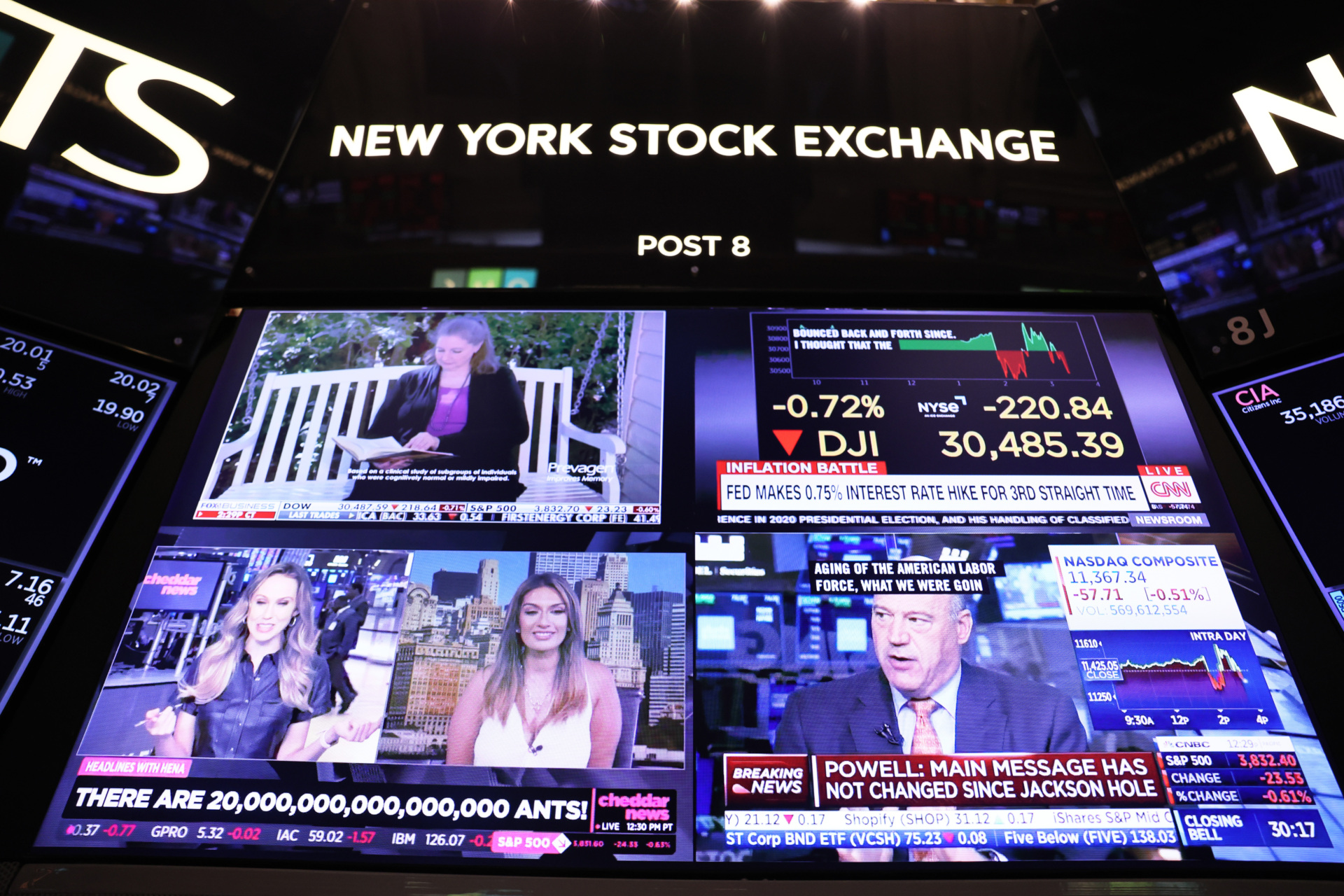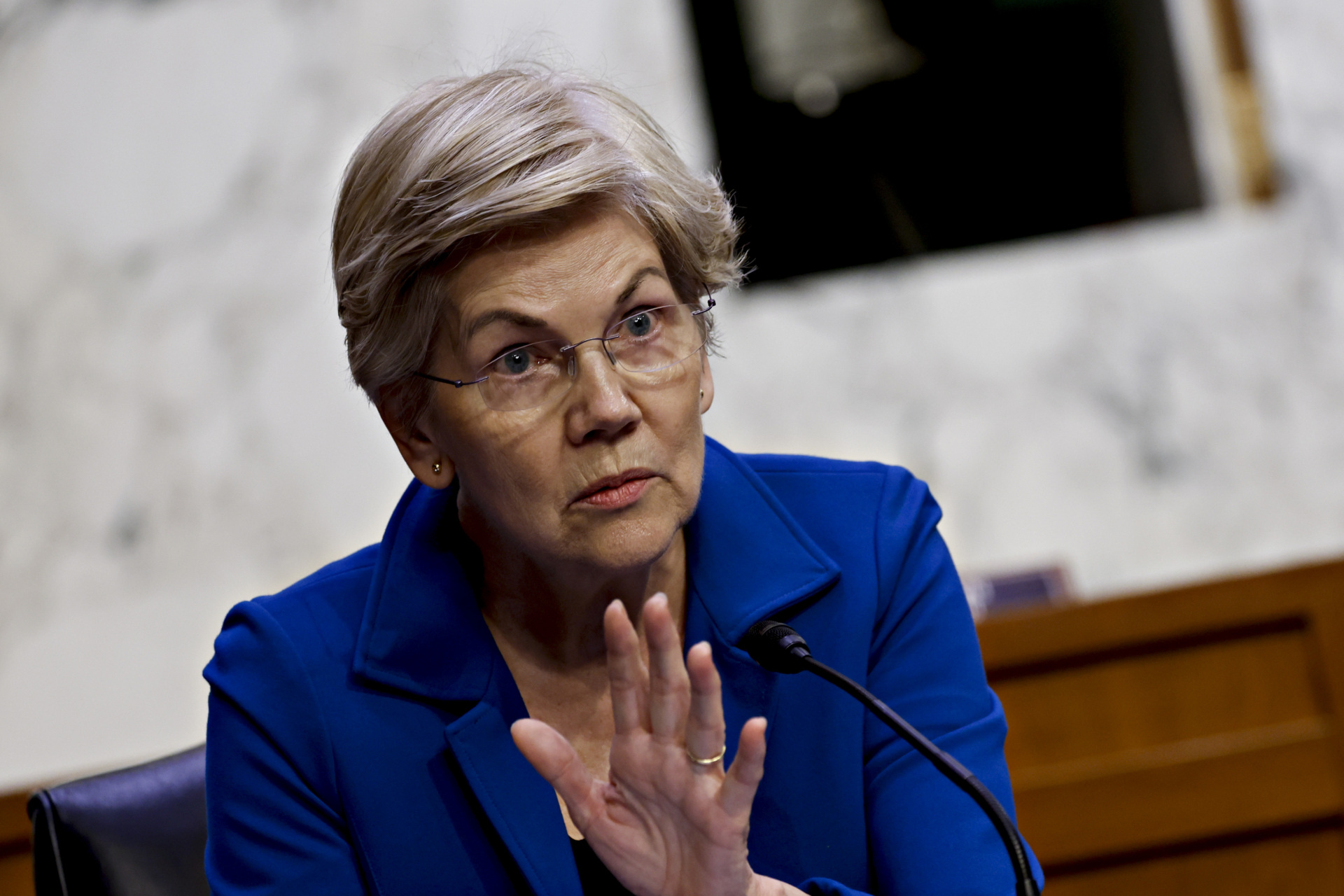Jerome Powell took up arms against a sea of troubles on Wednesday.
Powell’s Federal Reserve announced on Wednesday the expected 75 basis point hike in the benchmark Federal Funds rate. The thing that caught the market’s attention, however, was that the summary of economic projections of Fed officials has the Fed Funds rate rising to 4.4 percent this year and 4.6 percent next year. That’s an additional 125 basis points this year and at least one more hike next year.
Most analysts had the Fed Funds rate rising to four percent by the end of the year or by the February meeting. So the new projection is significantly more aggressive than what economists were expecting. And the Fed’s so-called “terminal rate”—the highest it is expected to go in this cycle—had been pegged at a range of four percent to 4.25 on the dovish end and 4.25 percent to 4.50 percent on the hawkish side. The new projections assume a rise to 4.50 to 4.75.

U.S. Federal Reserve Board Chairman Jerome Powell speaks during a news conference following a meeting of the Federal Open Market Committee (FOMC) on September 21, 2022, in Washington, DC. (Drew Angerer/Getty Images)

Financial news is seen on a television on the floor of the New York Stock Exchange on September 21, 2022, in New York City. Stocks dropped in the final hour of trading after Federal Reserve Chairman Jerome Powell announced that the Federal Reserve will raise interest rates by three-quarters of a percentage point in an attempt to continue to tame inflation. (Michael M. Santiago/Getty Images)
To put that into a timeline, it appears that Fed officials now expect another 75 basis point hike in November, 50 basis points in December, and 25 at the March meeting. Some think the Fed is likely to go even higher.
“We now expect hikes of 75 basis points in November, 50 basis points in December, followed by two 25 basis points rate hikes by March of next year,” Bank of America said in a report on Wednesday. The Bank added that its “new terminal target range is 4.75-5.0 percent, up from 4.0-4.25% previously.”
There’s room for criticism of the projections of Fed officials. As Powell has acknowledged, the Fed’s projections have been immensely inaccurate. A year ago, Fed officials projected the economy would grow 3.8 percent this year. Now it sees growth at an almost zero to 0.2 percent. The projection for inflation was just 2.2 percent last August, back in the glory days of transitory inflation. The latest projection is for inflation to end the year at 5.4 percent. The Fed is not even a good projector of its own policies. A year ago, it saw the Fed Funds rate ending 2022 at 0.3 percent. We’re already ten times that, and the Fed’s end-of-year projection is 410 basis points above that.
By subscribing, you agree to our terms of use & privacy policy. You will receive email marketing messages from Breitbart News Network to the email you provide. You may unsubscribe at any time.
Powell made an interesting and overlooked point about the Fed’s errant projections at the meeting. He insisted that the public should look at the projections dynamically. If the Fed turns out to be wrong about how high rates need to go to bring down inflation, then rates will be higher than projected. The Fed, he insisted, will bring down inflation even if it has to go beyond the levels of interest rates and unemployment it expects. In that way, the evidence of the Fed’s errors above is also evidence of the Fed’s flexibility. Central bankers do not feel constrained by their past projections.
So how realistic are the Fed’s projections? Not very. The Fed sees unemployment rising to just 4.4 percent next year and staying there the year after that. This mild rise in unemployment, to a level that would be considered historically quite low, does not seem likely to bring down inflation from the current 6.3 percent year-over-year level down to the Fed’s estimate of 2.8 percent. Even the year-end estimate of 5.4 percent seems like a stretch. It appears that once again the Fed is underestimating what it will take to bring inflation more in line with its target.
Powell almost immediately came under attack from the left on Wednesday. “Chair Powell just announced another extreme interest rate hike while forecasting higher unemployment. I’ve been warning that Chair Powell’s Fed would throw millions of Americans out of work — and I fear he’s already on the path to doing so,” Sen. Elizabeth Warren (D-MA), a member of the Senate Committee on Banking, Housing, and Urban Affairs, wrote on Twitter.

Sen. Elizabeth Warren (D-MA) speaks during a Senate Banking, Housing, and Urban Affairs Committee hearing on June 22, 2022. (Ting Shen/Bloomberg via Getty Images)
There is a kind of logic to this attack. President Joe Biden has insisted that inflation is over. It moved up “barely an inch”—an oddly inapt way of measuring price changes—Biden told 60 Minutes this weekend. Democrat officials who are convinced inflation is not a problem naturally will object to Powell’s attempt to soften the labor market. Without inflation, there would be no justification for it.
Of course, the Democrats and President Biden are wrong. There is plenty of inflation. Powell appeared to anticipate the Warren objection at his press conference.
“Higher interest rates, slower growth, and a softening labor market are all painful for the public that we serve. But they are not as painful as failing to restore price stability,” he added.
Powell’s position is that it is not nobler to suffer the slings and arrows of outrageous inflation. He chooses to take up arms against the sea of troubles and, he hopes, by opposing end them.

COMMENTS
Please let us know if you're having issues with commenting.